Ford Motor Company Advertising and 5 Influential Artists
Known as the “Golden Age of Illustration,” the decades surrounding the turn of the 20th century were a prosperous time to be an artist in the business of illustration. Technological advancements in papermaking and the increasing affordability of color printing, along with improvements in the railroad and postal systems, launched an unprecedented era for publishers. By the 1920s, this improved ability to reach audiences led to a national demand for illustrations in printed literature like books and magazines, spurred on by rising consumerism and tantalizing advertising revenue.
These new employment opportunities offered artists the possibility of becoming a household name — illustrations commissioned for national advertising campaigns or featured on the covers of widely distributed publications could be viewed by countless Americans. As with other major companies of the period, Ford Motor Company tapped into a growing pool of artistic talent for its advertising efforts. Below are the stories of five artists who not only elevated Ford’s brand awareness through their own art but also helped shape the visual culture of mid-20th-century America.
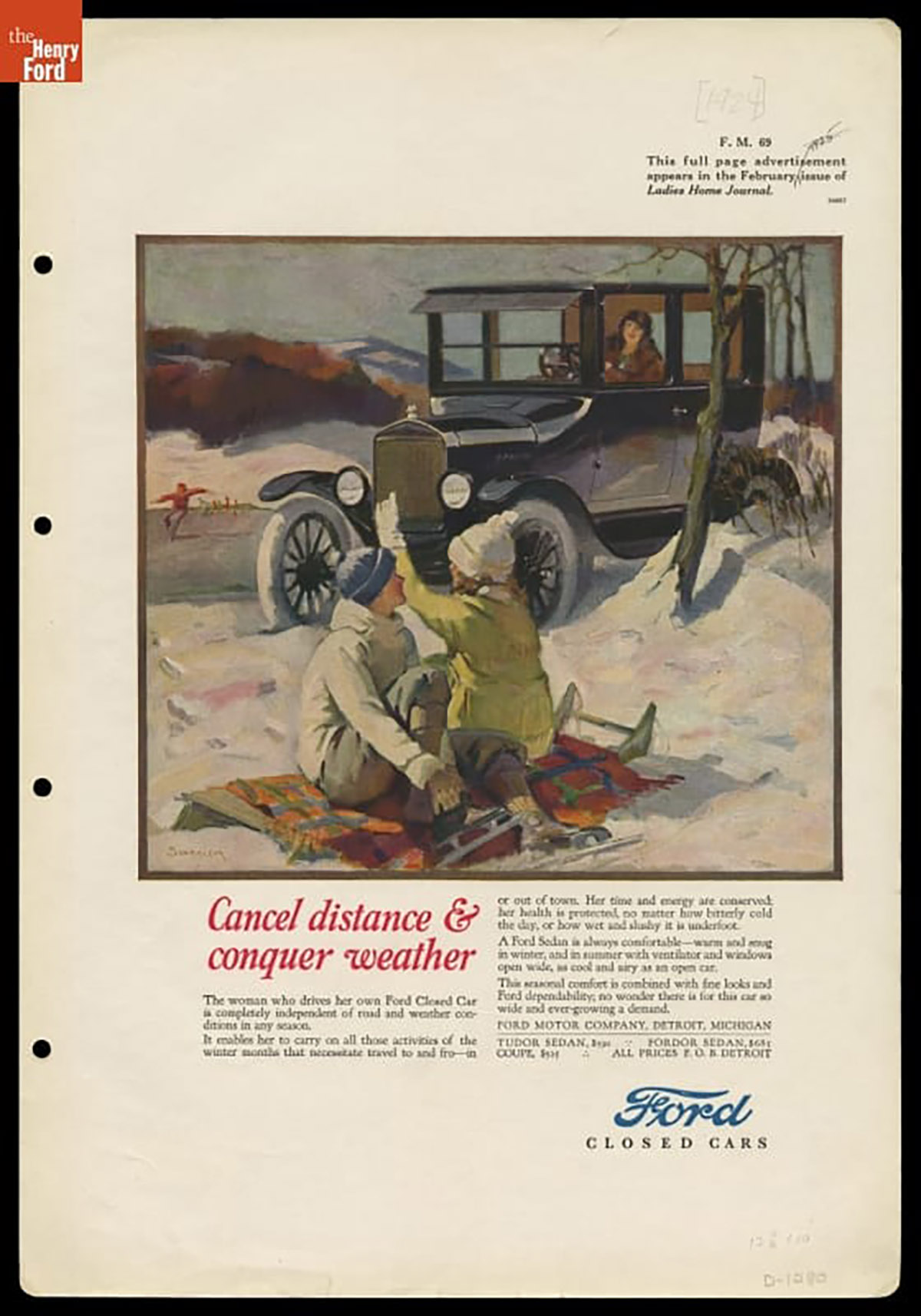
Advertisement for the 1924 Ford Model T, "Cancel Distance & Conquer Weather." Illustration by Haddon Sundblom. / THF97020
Haddon Sundblom (1899-1976)
Born in Muskegon, Michigan, to Scandinavian immigrants, artist Haddon “Sunny” Sundblom left school as a young teenager to help provide for his family after his mother died. Sundblom eventually continued his education, this time in Chicago, Illinois, where he worked construction jobs during the day and enrolled in night classes with the hopes of becoming an architect. Interested in art, Sundblom later studied at the Art Institute of Chicago and the American Academy of Art. In 1920, Sundblom took a job as an apprentice at one of Chicago’s largest illustration firms, Charles Everett Johnson Studios, whose stable of illustrators represented some of the top commercial advertising artists of the period. By the mid-1920s, around the time Sundblom was forming his own studio partnership with Edwin Henry and Howard Stevens, Ford Motor Company engaged the talented young artist in multiple advertising campaigns for its best-selling Model T automobile and its new luxury line, Lincoln. A long, successful career followed, including commercial illustrations for major brands of the mid-20th century. Notably, Sundblom’s colorized head and shoulders portrait of a man in traditional Quaker clothing for Quaker Oats packaging helped popularize the brand, while some of Sundblom’s most iconic pieces of work, illustrations of Santa Claus for Coca Cola, which he depicted from 1931 to 1964, remain influential in popular culture today.
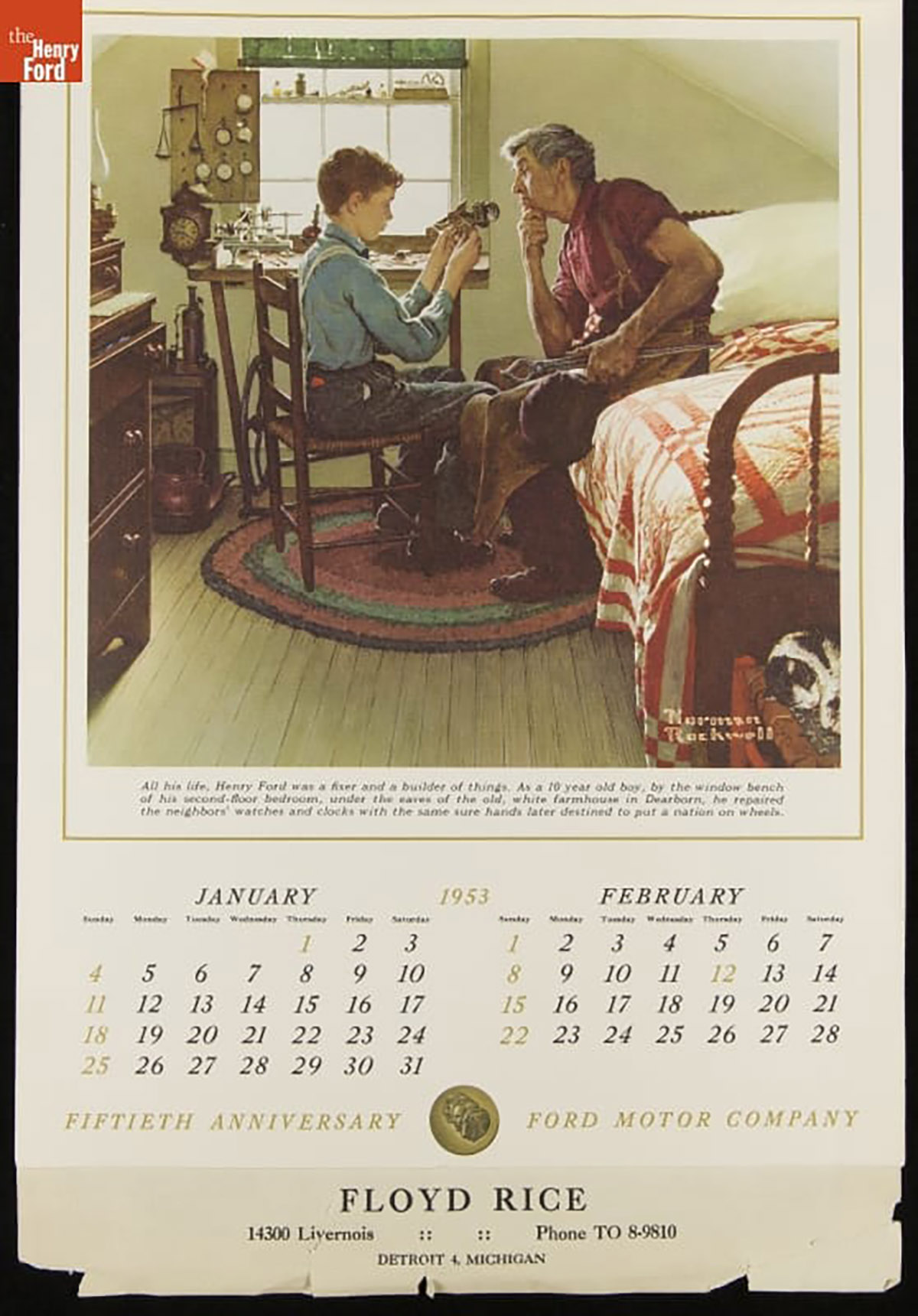
Ford Motor Company Fiftieth Anniversary Calendar, Advertising Ford Dealer Floyd Rice, Detroit, Michigan, 1952-1953. Illustration by Norman Rockwell. / THF288538
Norman Rockwell (1894-1978)
One of the most recognizable names of the “Golden Age of Illustration” was painter and illustrator Norman Rockwell. Born in New York City, Rockwell got his start at the age of 14 when he attended the art program at the New York School of Art (now Parsons School of Design). Later studying at the National Academy of Design and the Art Students League of New York, at just 18 Rockwell took advantage of a burgeoning art market with his first commission, illustrating Carl H. Claudy’s 1912 book, Tell Me Why: Stories about Mother Nature. From there, Rockwell’s career took off. After being appointed as art editor of Boys’ Life, a magazine produced by the Boy Scouts of America, Rockwell moved on to his career-defining role at The Saturday Evening Post, where he produced 323 culturally impactful covers over 47 years (1916-1963). For Ford Motor Company's 50th Anniversary in 1953, Henry Ford II, the company’s president at the time, commissioned eight paintings from Rockwell. Four of the paintings highlighted Henry Ford's past and his impact on the larger world, while the others focused on Ford Motor Company's present and future. Distributed through dealers across the country, Ford offered a small home calendar which featured six Rockwell images and a cover page with an image of the three Ford family members who served as company president.
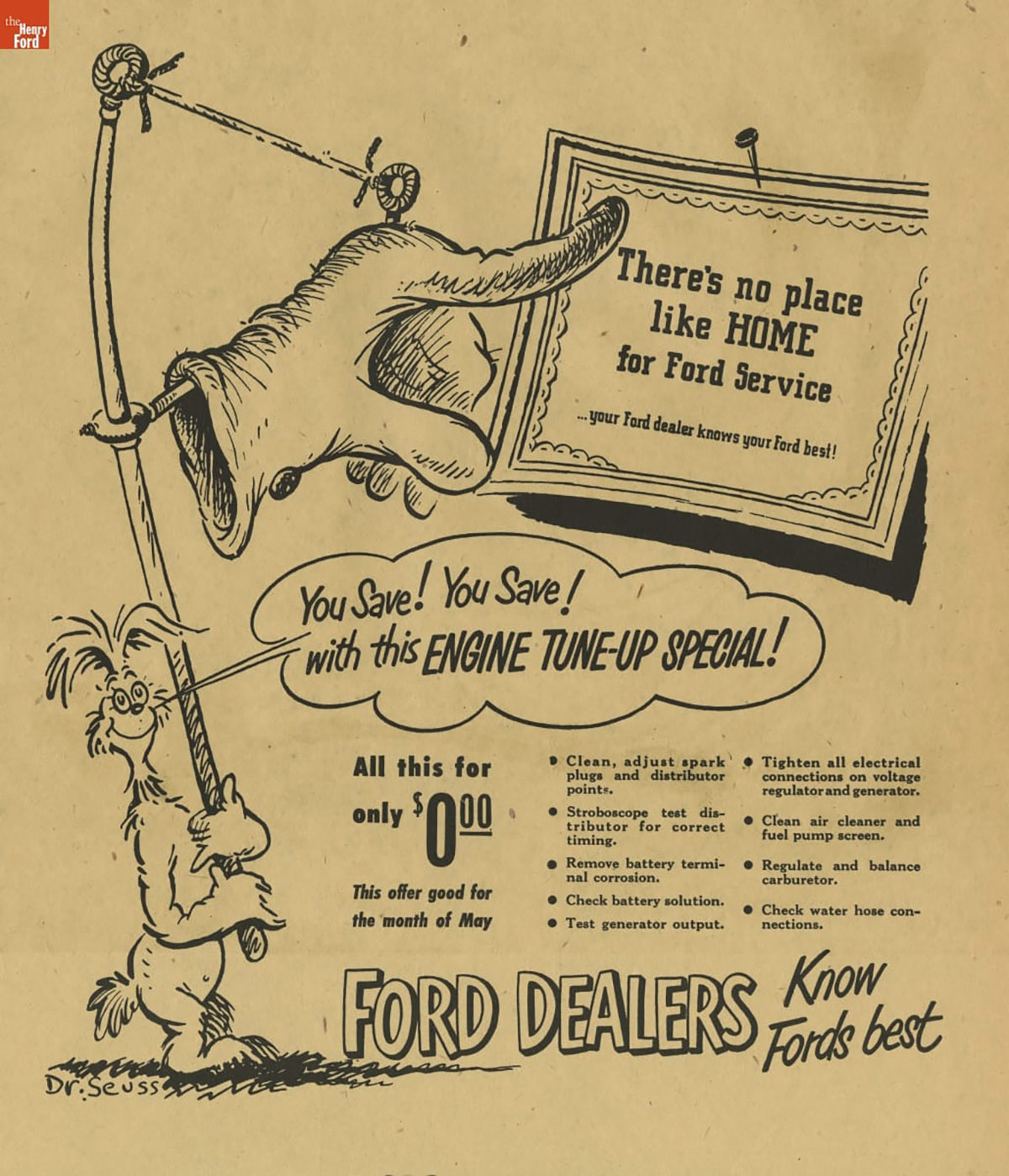
“You Save! You Save! With This Engine Tune-Up Special!” Ford Dealers Advertisement, 1949. Illustration by Theodor Geisel. / THF714195
Theodor Seuss Geisel (1904-1991)
Born into a prominent Springfield, Massachusetts, family, Theodor Geisel, also known as Ted, grew up visiting the zoo located in the park of his childhood neighborhood, Forest Park. Often accompanied either by his father (later a superintendent of the zoo for 31 years) or his mother and sister, along with his sketchpad, Geisel’s early caricatures of animals demonstrated a budding artistic ability. At Dartmouth College in the early 1920s, Geisel became a contributor, then editor, of The Jack-o-Lantern, the school’s humor magazine. An incident Geisel’s senior year led to his removal as editor, but he continued submitting his work for the magazine, adopting his middle name, Seuss, as a pseudonym. While pursuing a degree in English literature at the University of Oxford, Geisel was convinced by his future wife, Helen Palmer, to attempt a career as an advertising illustrator, which he explored and found early success creating ads for Standard Oil’s insecticide FLIT. Advertising work, including his 1949 illustrations for Ford Motor Company’s Parts and Service Division, sustained Geisel until the 1950s when his children’s books brought him critical acclaim under the pen name Dr. Seuss.
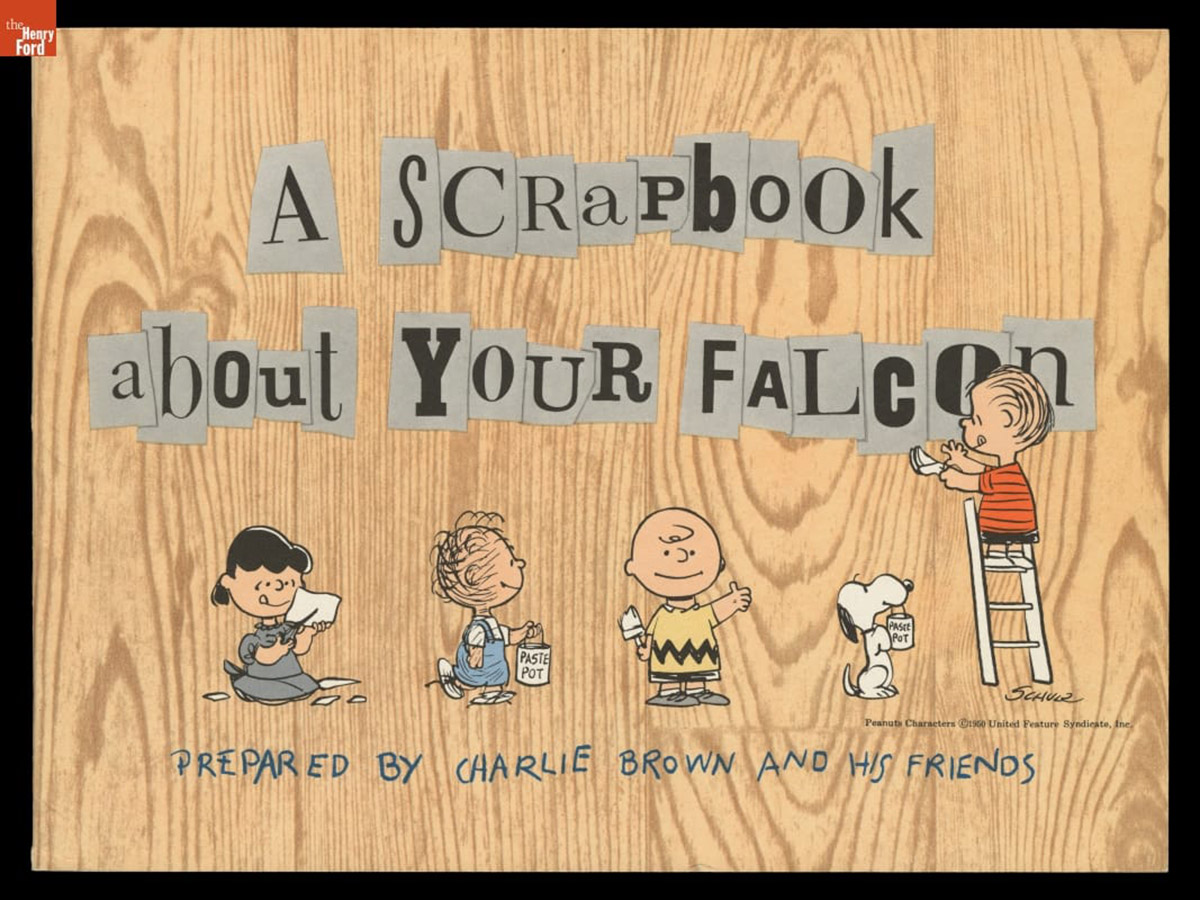
“A Scrapbook about Your Falcon, Prepared by Charlie Brown and His Friends,” including characters from the “Peanuts” comic strip, 1962. Illustrations by Charles Schulz. / THF128157
Charles Schulz (1922-2000)
As a child in St. Paul, Minnesota, Charles Schulz loved to draw, inspired by his favorite comic strips like Elzie C. Segar’s Thimble Theatre and Popeye, Roy Crane’s Wash Tubbs and Captain Easy, and Percy Crosby’s Skippy. Comic strips, a series of adjacent drawn images, usually arranged in horizontal panels and designed to be read in sequence, soared to popularity in the late 1800s and by the 1920s were regularly featured in many newspapers on full “comics” pages. Following his World War II service, Schulz worked as an instructor at a cartooning and illustration school but continued his passion for drawing, creating his first cartoon series, a strip of one-panel jokes called Li’l Folks, published between June 1947 and January 1950 in The Saturday Evening Post and the St. Paul Pioneer Press. A slight success, Schulz developed Li’l Folks into a four-panel comic strip once it was picked up for syndication and rebranded the comic as Peanuts. Despite starting off slow, Peanuts eventually became an enormously popular comic strip, appearing in over 2,600 newspapers worldwide. From 1960 to 1965, Ford Motor Company paid an annual licensing fee for exclusive rights to have Peanuts characters speak for Ford’s new compact model, the Falcon, in print ads, billboards, animated TV commercials and sales brochures.
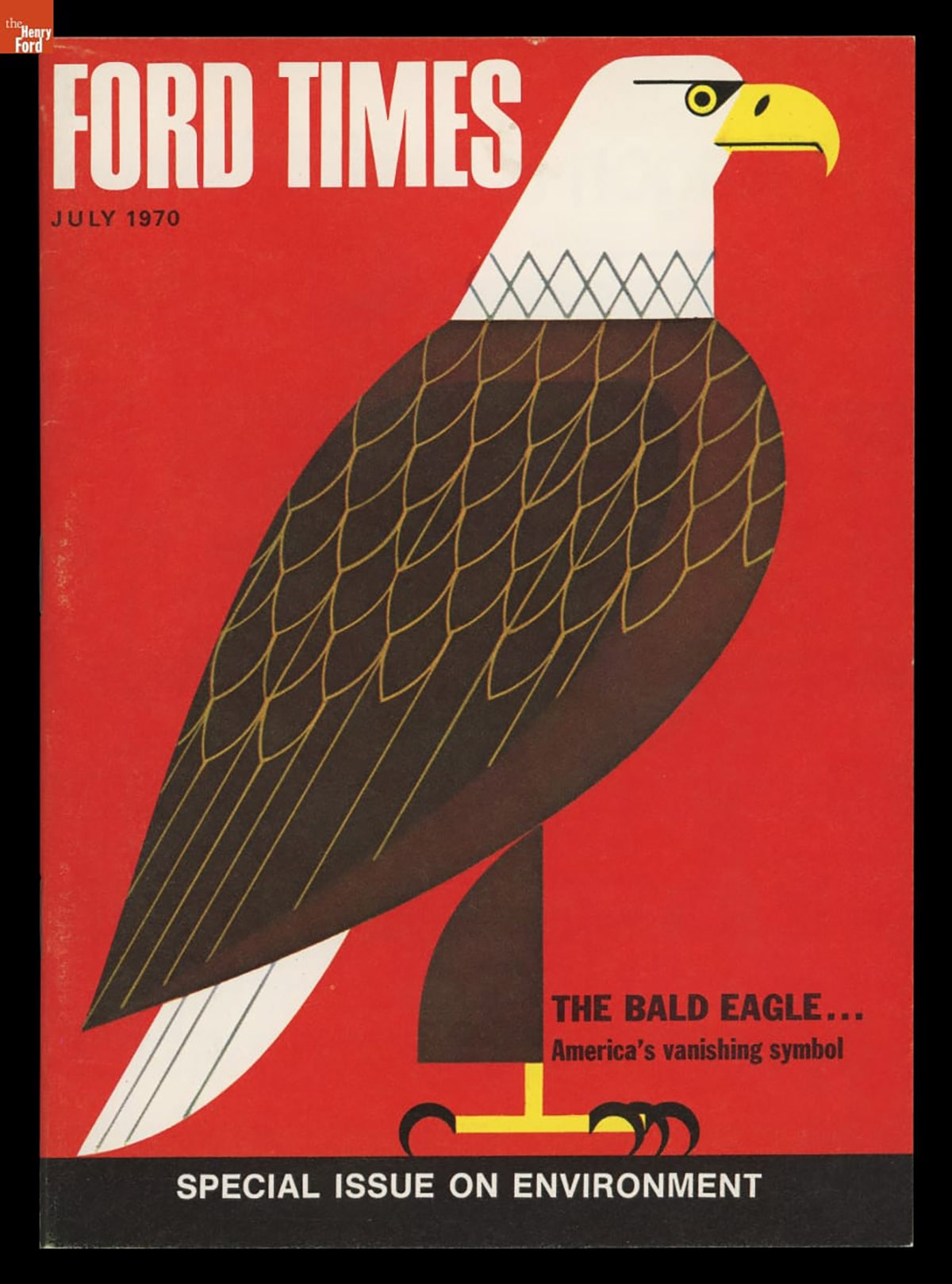
"Ford Times," July 1970. Illustration by Charley Harper. / THF706466
Charley Harper (1922-2007)
Growing up on a farm in West Virginia, artistic-minded Charley Harper was always captivated by one subject: wildlife. After graduating from the Cincinnati Art Academy in the late 1940s, Harper had just begun his career as an advertising artist when a portfolio he’d assembled during his recent honeymoon caught the attention of the Ford Times. Published by Ford Motor Company, Ford Times was a promotional magazine featuring a mix of travelogues and general interest stories, along with Ford advertising. Harper’s first Ford Times illustration appeared in the December 1948 issue, and his first cover art was published in 1951. Harper’s work with Ford provided national exposure and connected him with the publisher Golden Press, which commissioned Harper to illustrate The Giant Golden Book of Biology in 1961 and The Animal Kingdom in 1968. These books exposed audiences of all ages to Harper’s illustrations and persuaded him to fully commit to a career in wildlife art. Through mid-1982, Harper continued to produce his iconic simplified, geometric depictions of wildlife for use in Ford Times.
Ryan Jelso is an associate curator at The Henry Ford.

